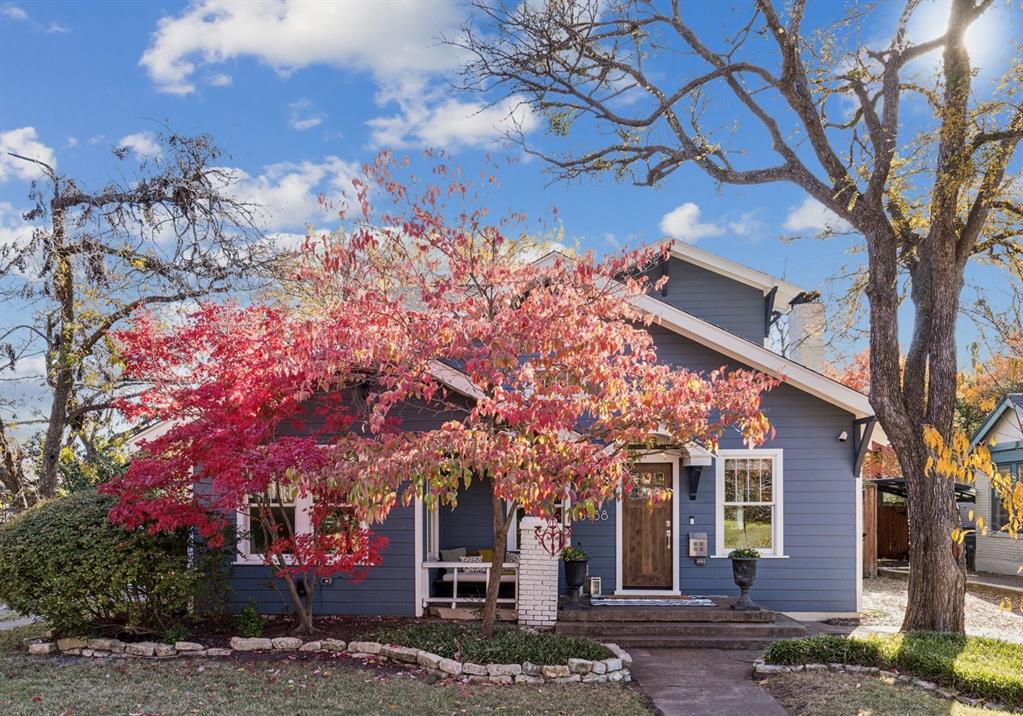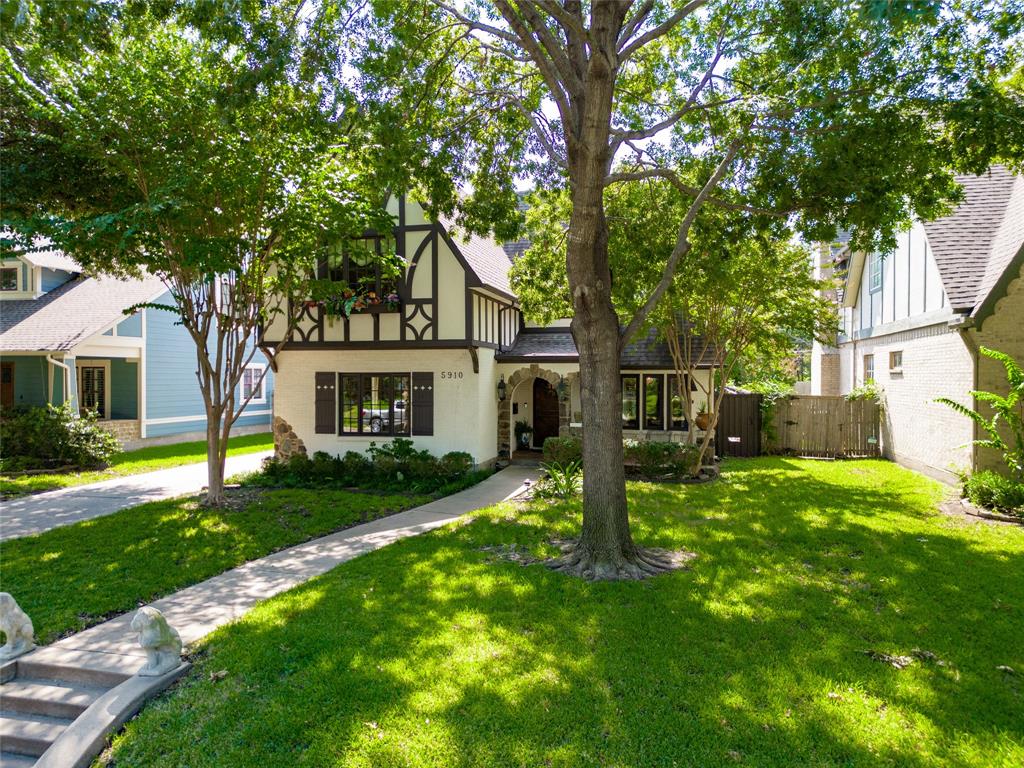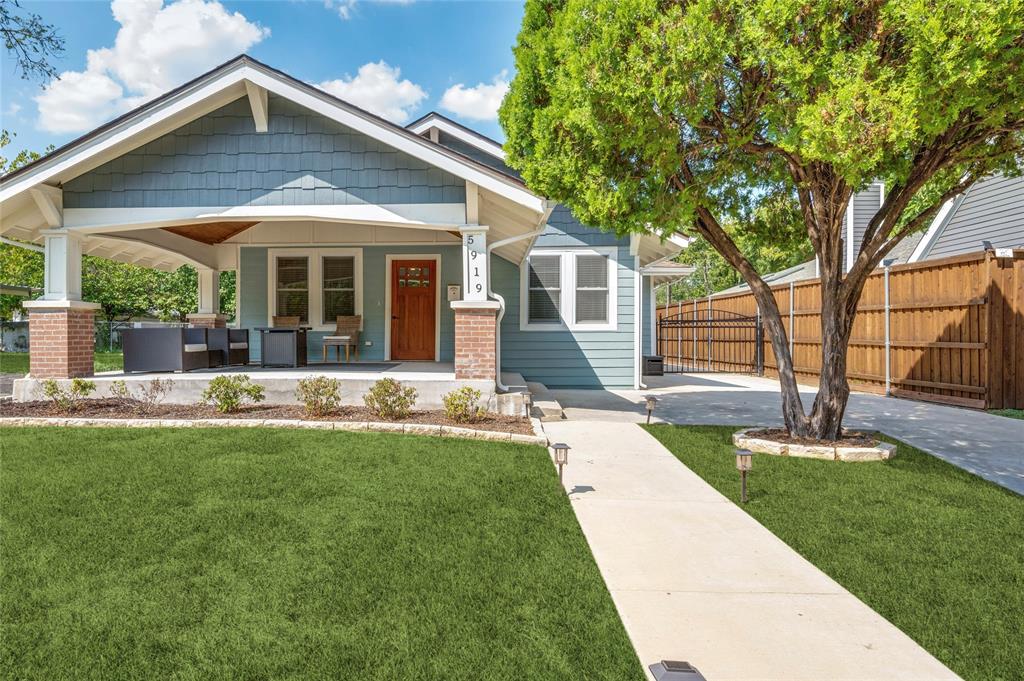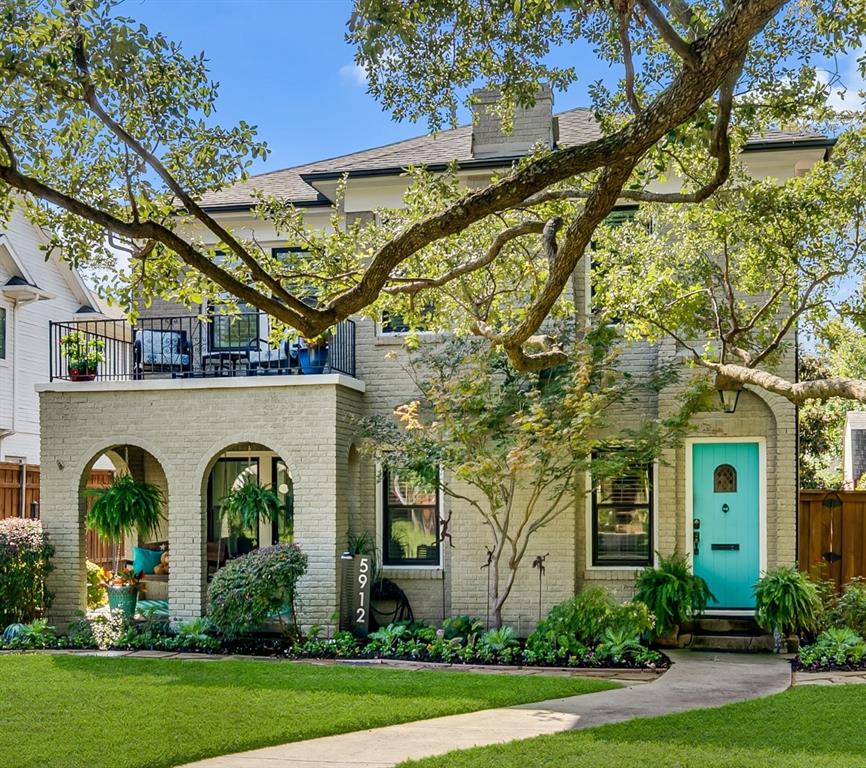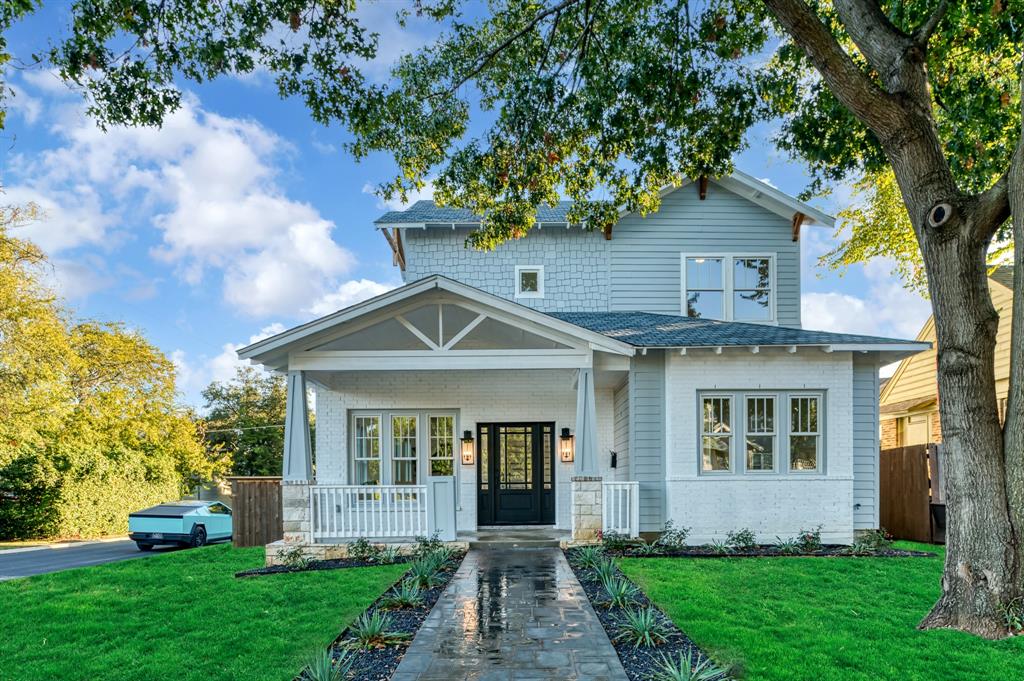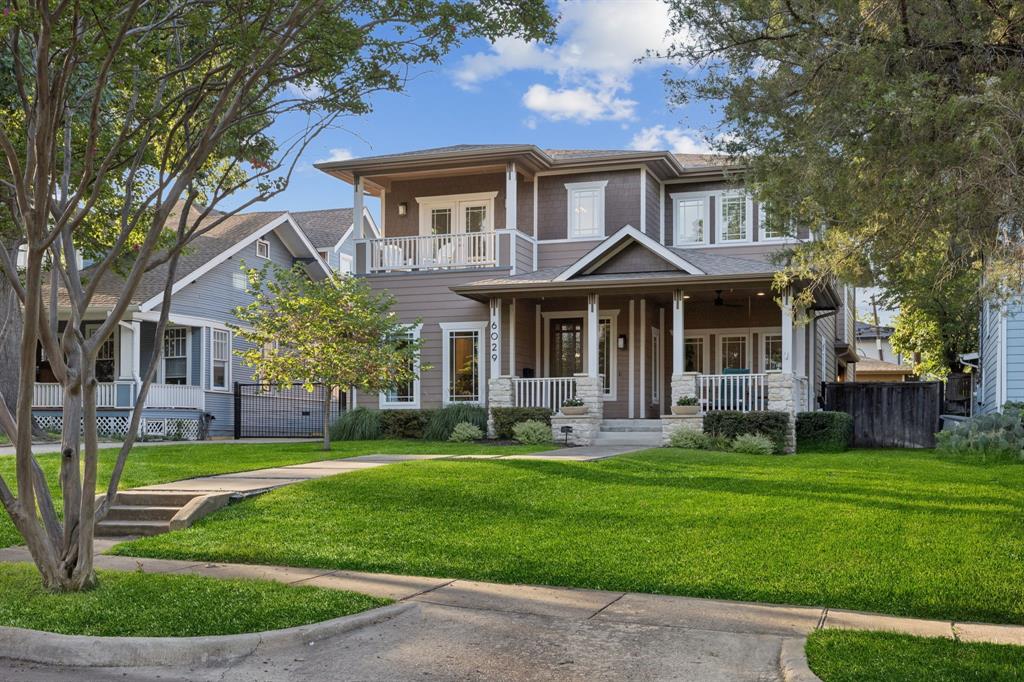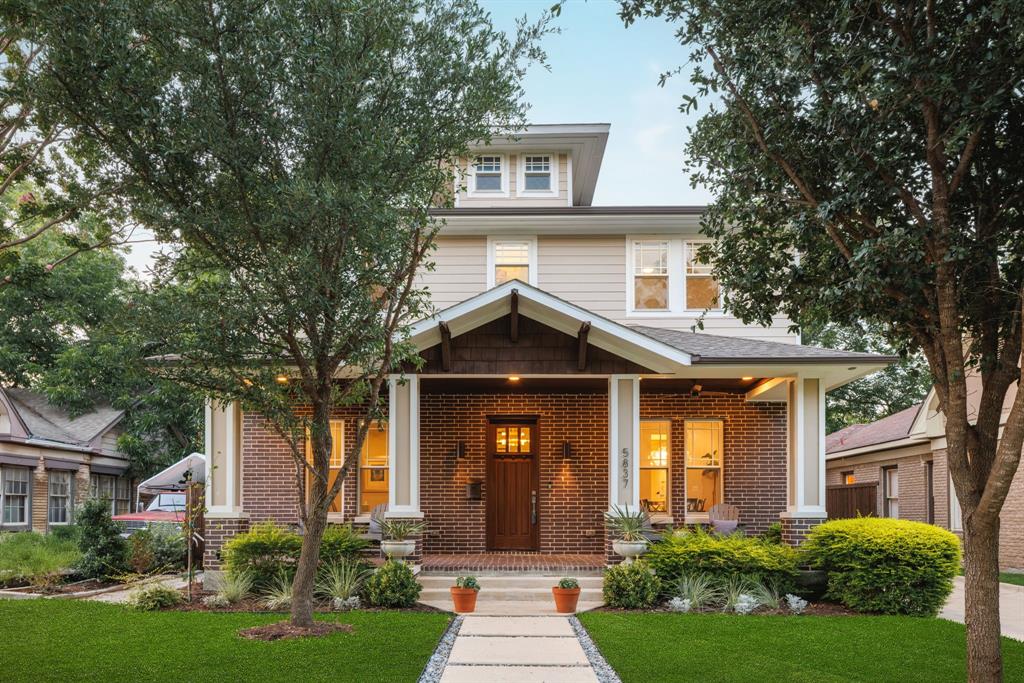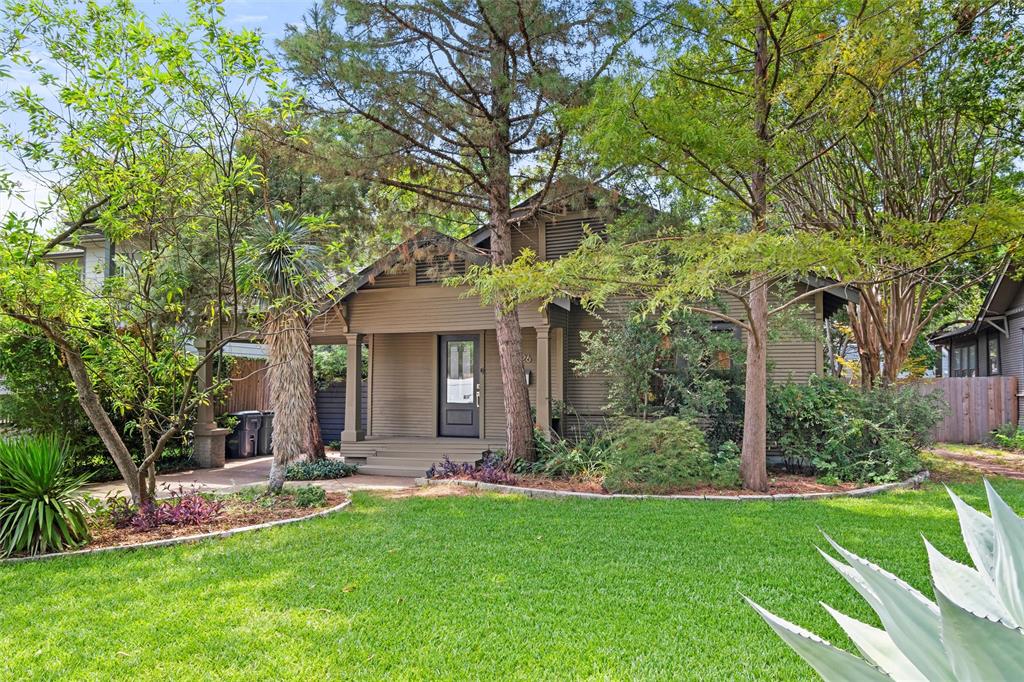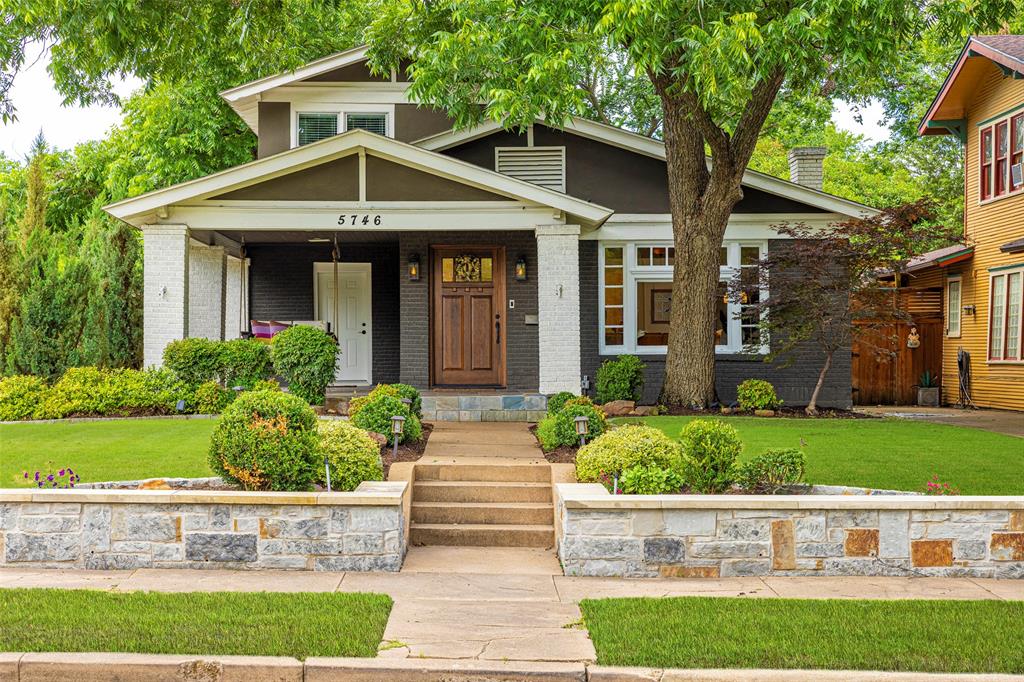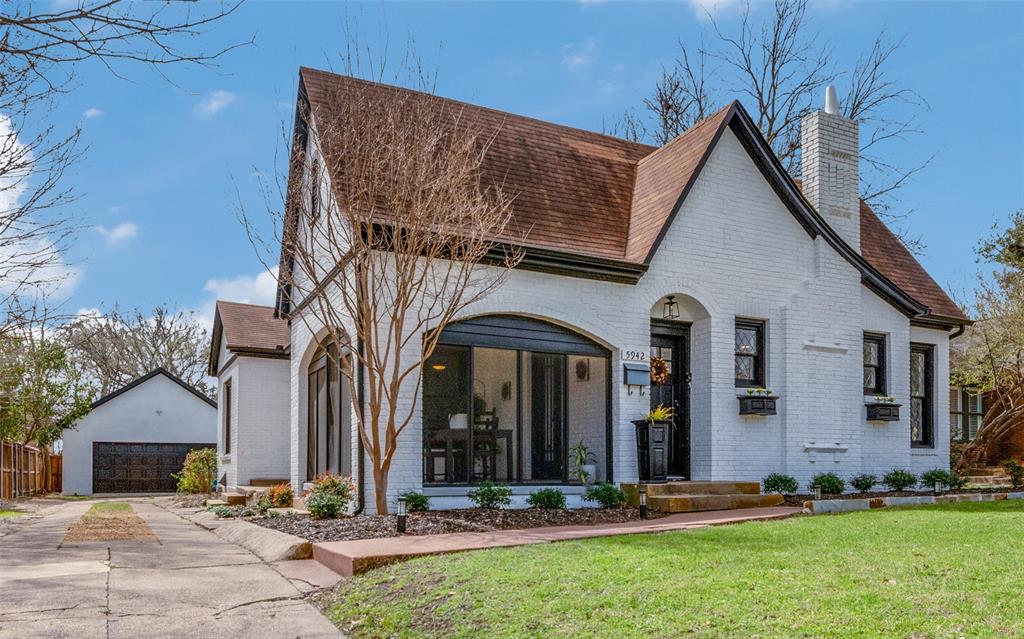Belmont Conservation District



Explore the Best Homes of Belmont Conservation District in Old East Dallas
The Belmont Conservation District neighborhood is architecturally a little bit of Tudor Cottages seen in Greenland Hills, a little bit of Prairie Style homes found in Munger Place, and a whole lot of architecturally significant Craftsman bungalows, sprinkled with Old East Dallas duplexes, fourplexes, and small midcentury apartment complexes when Old East Dallas was blanket-zoned MF2 (multifamily two-story) zoning in the middle part of the 20th century. Fabulous examples of Craftsman bungalows from the 1920s can be found in the Junius Heights Historic District and the Winnetka Heights Conservation District next to Kessler Park. But the Belmont Addition has the best collection of architecturally significant Craftsman bungalows in Dallas.
Location of Belmont Addition Neighborhood

The Belmont Addition Conservation District is bound by Skillman Avenue on the east, Greenville Avenue on the west, Belmont Street on the south and Llano Street on the north.
The location of the Belmont Conservation District allows the neighborhood to enjoy the restaurants of Greenville Avenue on one boundary and the trails of White Rock Lake, just eleven blocks away, in the other direction. SMU is only eight blocks away from the Belmont neighborhood, Highland Park is only six blocks away, and the restaurants on Henderson Avenue are close by as well as artist shops and restaurants in Lakewood Shopping Center. The Arts District is only 30 blocks away. The Belmont neighborhood with homes on high, elevated lots on tree-lined streets convey nature while the retail areas surrounding the Belmont neighborhood project vibrancy.
Here is What You Will Find on This Belmont Conservation District Page
In this Belmont Conservation District neighborhood section you will discover the best homes found in this neighborhood. In addition you will see a few featured homes to provide you a sense of the range of homes you will find.
You will also see new listings of homes that just came on the market in MLS along with the homes with recent MLS status changes. These new listings are followed by every home for sale in MLS found in this neighborhood. You also will see every MLS home for sale mapped. And to give you a better understanding of the East Dallas market, you will see the homes in MLS that have previously sold in this neighborhood.
LOADING ..
Featured Home in Belmont Conservation District
20th Century Modern Home

6026 Goliad Avenue, Dallas, Texas
Craftsman Bungalow Representing 100 Years of Modernism
In the Belmont Addition neighborhood of Dallas, between the restaurants of Greenville Avenue and ten blocks from the trails around White Rock Lake, you will find this 1,400 square foot early modern home immersed in nature.
Oversized Houses on Small Lots is Passé. Smaller Homes on Oversized Lots is Right On Trend.

Homes that make people happy have always had a greater proportion of land than building square footage. This 1,400 square foot, two-bedroom, one-bathroom home on an oversized lot is right on point and trend. The recent pandemic has brought home this point as shelter-in-place orders had homeowners living and working out of their homes 24 hours a day, 7 days a week.
Staying at home made some people realize they like their home much less than they previously thought. Other homeowners love their homes even more. This home at 6026 Goliad Avenue is a home that one will love more every day as it brings joy every day. A shelter-in-place order becomes a forced working vacation when you are staying in a home surrounded by a large garden and yard like this one. A smaller house on a larger lot exudes the proportions of nature and home that people desire and that make them happy.

Home Perfect for Lovers of Art, Nature, Friendly Neighbors
We are realizing more and more that homes are more than a place to eat, sleep or occasionally entertain. A home that people love, like this one, inspires, connects, engages and makes living and working in a home a joy. We know this home inspires because of the creative lineage of past homeowners.
Mapped Belmont Conservation District Homes for Sale in MLS
LOADING ..
Today’s New Belmont Conservation District Listings and MLS Status Changes
Find today’s new listings and the total number of Belmont Conservation District homes for sale in MLS. Today we have a total of 0 new listings and a total of 3 homes for sale listed in Belmont Conservation District.
 For Your Convenience Download the DougNewby App
For Your Convenience Download the DougNewby App
This DougNewby Significant Homes app reflects his specialization in architecturally significant homes, modern homes, historic homes and estate properties. In addition, this app allows instant access to all MLS listings with high-resolution photographs and full property details that are updated every 18 minutes.
Are You a Belmont Conservation District Homeowner? You Have Come to the Right Place
If you are considering selling your Belmont Conservation District home, we will bring you the best results as we best understand your home and the potential buyers. Call me to see if I should represent you in selling your Belmont Conservation District home.
You understand the gracious elegance of East Dallas when riding your bike from Urban Reserve along the bike path past Mockingbird Lane, to West Lawther, to the Santa Fe Trail, Tokalon and Swiss Avenue to downtown Dallas.
-Douglas Newby
Contact National Award Winning Realtor Douglas Newby to See if He Should Represent You
The Best Homes in Belmont Conservation District Neighborhood
Rich History of Belmont Addition
The visionary Colonel Henry Exall purchased 170 acres of land on March 22, 1890, and by May 1, 1890, Henry Exall had submitted a plat map for 624 lots of the Belmont Addition, the first deed restricted neighborhood in Dallas. The deed restrictions required each home to cost a minimum of $2,000 and this was 15 years before the Munger Brothers placed a deed restriction requiring a $2,000 minimum house cost in their Munger Place Addition. Then, just two months later on May 8, 1890, Henry Exall sold his first three lots to Frank Irvine for $1,000 per lot on what is now the northwest corner of Belmont Street and Greenville Avenue.
But where was the Belmont Addition neighborhood, how did it come about, and how did it relate to Dallas and the rest of the country?
The Origin of the Belmont Addition
On March 26th in 1850, Allen Beard received a land grant of 640 acres, the Peters Colony Second Contract, of which he claimed 288 acres in Dallas bordered by what is now Greenville Avenue and Abrams Road and that was eventually developed as the Belmont Addition and Lakewood Heights in Old East Dallas.
J.W. Barton Purchases 288 Acres from Allen Beard In 1854
On November 23, 1854, Allen Beard sold his 288 acres to J.W. Barton, who already owned a 10-acre farm next to it on the south.
Audrey and Prather Purchased 170 Acres from J.W. Barton in 1886
A little over 30 years after his purchase, J.W. Barton on February 16, 1886, sold his original 10-acre farm and 160 acres of the 288 acres he acquired from Beard to the partnership of Audrey and Prather. The remaining 122 acres of Beard’s 288 acres went on to be developed as part of Lakewood Heights.
Henry Exall Purchases 170 Acres In 1890
Now the excitement begins. On March 22, 1890, Henry Exall went to St. Louis to borrow $100,000 from Adolphus Busch to purchase Prather and Audrey’s 170 acres. Henry Exall’s 100% financing of his purchase was transacted through Adolphus Busch’s St. Louis trust (earlier historical references sometimes refer to this trust as a St. Louis syndicate that bought 170 acres). Henry Exall quickly had his new deed restricted Belmont Addition neighborhood platted with 624 lots and then almost immediately sold his first three lots at $1,000 per lot. These contiguous lots that Frank Irvine purchased were probably the most attractive lots in the Belmont Addition because they were right across the street (now Greenville Avenue) from Bosque Bonita, the large Victorian style summer country house of Walter Caruth that he built on part of his 30,000 acres he acquired in the early 1850s that ran from what is now the West End to what is now NorthPark.
Henry Exall Had Just Purchased 2.2 Miles Square Area (now Highland Park) In 1889
Shortly before Henry Exall purchased Belmont Addition with the financing of Adolphus Busch, he organized Philadelphia investors and created the Philadelphia Place Land Association in order to purchase a 2.2 square mile area at $375 an acre that they named Philadelphia Place and is now Highland Park. The financial panic of 1893 stopped the real estate boom and led to a depression. This put Exall’s Philadelphia Place heartland development on hold. This same 1893 depression put a development halt to his advertised vision of the Belmont Addition neighborhood, with five-foot wide sidewalks, a thousand new trees, artesian well water and plans for transportation to the city. Even the Philadelphia Times quoted District Attorney Scott Graham as saying, “Dallas is growing rapidly. People are coming to it from all parts of the state and from other southern states and from the north. Standing on top of Belmont, where Colonel Exall is planning a small town, you can look over the roofs and steeples of the thickly settled portions of Dallas on the border of the river and up on the other side to Oak Cliff.”
Henry Exall Promoted Dallas Across the Country
One of the things that strikes me is that Henry Exall had connections across the country and recruited investors from both Philadelphia and St. Louis. It was like he was a one-man Chamber of Commerce. Is it possible the reason Adolphus Busch came to Dallas and eventually built the glamorous Adolphus Hotel is because he was introduced to Dallas by Henry Exall?
Henry Exall’s Vision Was Accurate
Henry Exall’s vision for both now Highland Park and the Belmont Addition Conservation District were accurate but early. Highland Park development, on the foundation of Exall vision, is now one of the most desirable townships in the country. Henry Exall’s vision for the Belmont Addition proved accurate as the Belmont Addition Conservation District with the same deed restrictions in place and has become one of the most popular Old East Dallas neighborhoods.
The Development of Highland Park and the Belmont Addition Had to Sit Idle for A While
The depression of 1893 put a halt to land sales and further development of Belmont. On June 5, 1894, Adolphus Busch on the courthouse steps took back the majority of the Belmont Addition lots, which the records show his bid of $20,000 prevailed to buy back the notes on some or all of the 10 staggered delinquent loans. This action put Belmont Addition property now primarily in the control of Adolphus Busch. There were a few other investors who had bought multiple lots before the 1893 financial panic, but these lots also remained a place to graze cows, ride horses or chase jackrabbits, not build homes. Henry Exall, over the years, continued to sell his few remaining lots to Adolphus Busch and others.
Philadelphia Place Also Remained Dormant
Philadelphia Place, because of the 1893 financial panic, also remained dormant and Henry Exall used this land as his horse breeding farm. In 1906, Henry Exall and his Philadelphia Land Association sold all of their land to John Armstrong for a little over $200 an acre. John Armstrong continued Exall’s vision and added landscape architect Wilbur David Cook and landscape architect George E. Kessler to further develop the park-oriented development plans, devoting 20% of Highland Park to parkland. By 1915, Highland Park became incorporated as its own town with a population of 1,100 and was on its way to becoming one of the most prestigious communities in the country.
Adolphus Busch Sold 478 Lots to the Belmont Land Company In 1911
On June 23, 1911, Adolphus Busch sold 478 lots to the Belmont Land Company headed by Rhodes S. Baker, Ben T. Seay and Jeff D. Robinson. Hann and Kendall real estate promoters and agents bought lots that they sold and then eventually represented the entire Belmont Land Company as their sales agent.
Another Era Had Begun
The Highland Park property and the Belmont Addition property had been put in good hands. The Adolphus Hotel was completed in 1912 and the Belmont Land Company made great strides in the Belmont Addition development. Adolphus Busch died near the end of 1912, with the death of Henry Exall quickly following him on December 29, 1913.
Joe Kendall’s Marketing Imprint on Belmont Addition Can Also Be Seen In Junius Heights
Elizabeth Forsythe Hailey, the author of the best-selling book A Woman of Independent Means, spoke to me of her grandfather with a smile and fondness as she called him a great real estate promoter. She recalls her grandfather recounting selling lots in the Junius Heights development in an Oklahoma land rush fashion, with a pistol being fired at midnight allowing buyers to run and claim a lot. Records show 200 Junius Heights lots sold in one hour. Elizabeth Forsythe Hailey named her oldest daughter Kendall after her successful grandfather.
Joe Kendall Markets Belmont Addition
Joe Kendall’s imprint and personality can certainly be seen in the extensive advertising for the Belmont Addition. His advertising copy includes,
“After a hot day downtown — build your home as high as the Adolphus and the rooftop gardens of the skyscrapers.”
“Wear your pajamas in the Belmont Addition because the cool breezes might blow you right out of bed.”
Lots in Belmont Addition Were Advertised as Starting at $1,000 per Lot
Lots in the Belmont Addition were advertised at $1,000-$1,500. $1,000 is the same price that the first three lots sold for 31 years earlier, in 1890. However, now the lots consistently sold. The first houses in 1911 and 1912 were two-story Prairie Style houses. By 1920 about three percent of the lots had two-story Prairie Style homes built on them. This was followed in the 1920s by the rapid development of Craftsman bungalows sparked by the effusive marketing by Hann and Kendall. By the 1930s a few Tudor style homes were built, followed by duplexes and fourplexes when multifamily zoning invaded. In the 1980s, homes were being enthusiastically renovated, and by 2004 the Belmont Addition Conservation District was put in place to conserve the Belmont Addition neighborhood and to protect and enhance its significant architectural and cultural attributes.” Craftsman style homes made the greatest contribution to the architectural significance of the neighborhood.
Conservation District Protects Belmont Addition
A conservation district was put in place to protect the architecturally significant Craftsman bungalows. The bungalows had very strict restrictions placed on them such as how square footage could be added to the original structure. Also, the conservation district required that any Craftsman bungalow torn down would have to be replaced by a two-story Prairie Style home.
In the year 2020, the conservation district might actually jeopardize the Craftsman bungalows in the Belmont Addition. Neighborhood leaders and neighborhood historians Barry and Geyden Sage have led an effort to review and revise the Belmont Conservation District Ordinance. They have collected signed petitions from over 70% of the Belmont Addition neighborhood requesting the city revise the Belmont Addition Conservation District Ordinance.
Good Intentions, Unintended Consequences – Belmont Addition Conservation District
Now there are almost 100 new two-story Prairie Style homes built in the Belmont Addition Conservation District. While a contributing architectural style of the neighborhood, they are diluting the Craftsman bungalow look of the neighborhood that distinguishes it from other Old East Dallas neighborhoods. While two-story Prairie Style homes are an indigenous architectural neighborhood style, they were not meant to dominate the neighborhood. The proliferation of new Prairie Style homes will dominate the neighborhood if Craftsman bungalow owners continue to be denied the ability to sensibly and sympathetically add on to their existing homes.
A modified ordinance would have front facades preserved while smaller second stories could be added to the home. Adjusting the setbacks to more accurately reflect where the original homes were built also gives owners a chance to preserve and improve them.
Modifying Ordinance Would Halt Contorted Additions
One of the benefits of modifying the Belmont Addition Conservative District Ordinance is that it would stop the unattractive contorted storage space-looking additions that take up a lot’s footprint. These current allowable additions stay within compliance of existing ordinance, but they take down trees and the natural attributes that come in a neighborhood filled with nature.
Review of Ordinance Could Allow Future ADUs to be Denied
The other great benefit of reviewing the Ordinance is it gives the homeowners a chance to eliminate the current allowance to build ADUs in the neighborhood. ADUs and backyard density is a virus that ultimately undermines the health and quality of the neighborhood while offering no real benefit.
Belmont Addition – Urban Myth
Every major source of neighborhood history, including early books by Ted Dealey of the Dallas Morning News, and decades of articles from various historians and journalists, and the book that I wrote for the Historic Preservation League, A Guide to the Older Neighborhoods of Dallas, and my Architecturally Significant Homes website, all perpetuate an urban myth that was debunked by the brilliant and conscientious research of Geyden and Barry Sage. They tirelessly researched and wrote a more accurate history for the September 2020 issue of D Magazine.
Previous History Reflecting Some Elements Not True
Below you will see the accepted history of the Belmont Addition that was passed down for decades. This includes that the Caruth brothers once owned the land where the Belmont Addition is found. This is not true. You will see that August Belmont developed the Belmont Addition neighborhood. This is not true. You will also see that August Belmont extended the streetcar to the Belmont Addition neighborhood. This is not true.
Matilda Street Was Just Country Strip Used for Interurban
In fact, Barry and Geyden Sage have a full file on the Vickery Place and Belmont Addition neighborhood strident demands, petitions, and raucous meetings insisting the city install streetcar service from Bryan Street and Garrett Avenue to their neighborhoods. The Sages also showed me a video of the Interurban electrified train running through a meadow in what is now Matilda Street by Stonewall School in 1949.
Citizens Bring Dallas History to Life
Whether it is the formal illumination of history by the Legacies Journal or the spontaneous and dedicated research of Barry and Geyden Sage, it is wonderful to see Dallas citizens, homeowners and neighbors illuminate history and make living in the Belmont Addition, Old East Dallas, Dallas, and Highland Park even more rewarding.
Revisions to My History of Belmont Addition
While parts of my original Belmont history section are accurate, the chain of ownership and the original developer is not. Near the top of the page, I have written my revised interpretation of the Belmont Addition, relying heavily on the files Barry and Geyden Sage generously shared with me. If I have made further mistakes, I take further responsibility for those and, where accurate, I give credit to Geyden and Barry Sage for the wonderful research they have done.
Thank you, Geyden and Barry.
Urban Myth—History of Belmont Addition

The Belmont Addition Conservation District neighborhood has quite a genealogical pedigree. When I researched and wrote A Guide to the Older Neighborhoods of Dallas, published for the Texas Sesquicentennial in 1986, I discovered that the Belmont area was originally part of the 30,000 acres Walter Caruth and his brother had started purchasing in the 1850s. The Caruth Brothers in 1885 built an elegant three-story farmhouse, Bosque Bonita, at the northwest corner of what are now Belmont and Greenville Avenues. The closest streetcar was two miles away on Ross Avenue and the cotton and cornfields stretched as far as the eye could see.
Ross Avenue Heights
In 1885, a St. Louis syndicate bought 170 acres of the Caruths’ acres at a 7,000% profit. These 170 acres became the Ross Avenue Heights development. However, without the streetcar line Ross Avenue Heights never got off the ground. Only one house was built.
August Belmont Invested in Dallas
In 1892, the same year August Belmont, a New York financier and developer, invested in the magnificent Oriental Hotel under construction at the corner of Commerce and Akard, he purchased the 170 acres from the St. Louis syndicate. August Belmont then extended the streetcar line (not as monumental a project as the original New York subway which he financed in 1900-1904), which at the time was very impactful for the neighborhood renamed the Belmont Addition. August Belmont also graded the streets, marked out the elevated lots and built sidewalks.
The Depression of 1893 Brought Belmont Addition to a Standstill
The Depression of 1893 was the same Depression that brought the downfall to the prosperous and gaudy development of T.L. Marsalis in North Oak Cliff. T.L. Marsalis had already bought out at a high price his former partner, John Armstrong, which allowed John Armstrong to take advantage of the Depression of 1893 and buy all of the land of Highland Park from Henry Exall for $200 per acre. This Highland Park land was purchased by Henry Exall and his Philadelphia syndicate for $300 per acre in earlier and better economic times. The Belmont Addition was doomed to sunflowers and high grass until 1910 when the Belmont Land Company and Hann and Kendall Real Estate Company began selling lots through the 1910s and 1920s to developers and builders. This came on the heels of Joe Kendall’s real estate success marketing the Munger Brothers’ Junius Heights neighborhood. Elizabeth Forsythe Hailey, author of the best-selling book and mini-series, A Woman of Independent Means, told me that her grandfather, Joe Kendall, recounted to her the Oklahoma land rush atmosphere he created with the opening of the Junius Heights development. All the buyers were lined up and when the gun went off at midnight they rushed to claim their favorite lot and the records show 200 lots were sold in less than an hour. The Craftsman bungalows became the prevalent architectural style of Junius Heights and this Craftsman bungalow style carried over to the lots Joe Kendall sold in the Belmont Addition. In 1919, Walter Caruth sold Bosque Bonita to Miss Ela Hockaday and it became the Hockaday School for Girls and remained there until 1961. The growing population of Dallas and the booming economy caused the Belmont Addition, filled with good-looking early 20th century homes on elevated lots under a canopy of trees, to flourish.
Belmont Conservation District is a Neighborhood of Legends
The Belmont Conservation District has been a neighborhood of Dallas legends. On one block of Goliad you will see the house 6023 Goliad in which Billy Marcus, Stanley Marcus’ wife, grew up. You will also see a home on 6026 Goliad where Allison V. Smith, the granddaughter of Stanley Marcus, owned a home.

Rezoning for Apartments Caused Neighborhood Decline

In the midcentury, the blanket (MF2) two-story apartment zoning in the Belmont Addition in Old East Dallas disrupted the stability of the neighborhood and caused its decline. Single-family homes were divided into apartments and new small apartment complexes began to spring up. The trend of a more transient rental population of renters replacing stable homeowners continued. By the 1960s and 1970s, an entire airplane bungalow in the Belmont Addition could be rented for $100 per month.
Revitalization Culminated in the Creation of the Belmont Conservation District

In the 1980s young homeowners began gradually moving into the neighborhood and stabilizing these good-looking but tattered homes. In 1986, the Belmont Addition was one of 30 neighborhoods featured in the oversized book A Guide to the Older Neighborhoods of Dallas which further cemented the certainty of its successful future. In 2004, the success of the revitalization and the interest of the neighbors culminated in the Belmont Addition becoming a conservation district.
Now the Belmont Addition, in the center of Old East Dallas, draws from the best aspects of many of the neighborhoods that surround it.
Sold MLS Homes in Belmont Conservation District
This section is created to help you understand the Belmont Conservation District market. Knowing the homes that have sold will give you an idea of the future inventory of homes coming on the market and the trend of the Belmont Conservation District prices.
Belmont Conservation District Homeowners Appreciate Douglas Newby
Dear Doug,
Where do I begin? I think the best way is to simply say thank you for making the purchase of our home a memorable and stress-free experience. We look forward to continuing our friendship.
Allison and Barry
Fantastic, Doug!
Would you believe I put on 5 old TED namebadges, turned off my phone, and clapped you on to the stage?
What a great talk! The content is really insightful and inspiring. Love that you were part of an exclusive society with the keys to the kingdom. I don’t think I’ve ever laid eyes on a top secret MLS book but the grainy print and tiny images and bad paper certainly paint a vivid picture.
The idea of selling the neighbourhood not the home really resonates with me. I’m in an emerging neighbourhood myself. My condo building was CBC’s warehouse in the 1950’s – 70’s. The 14′ ceilings, wide hallways and my “artist and urban pioneer” neighbours make me really happy. I was raised in big, old homes because we were such a big family. I certainly appreciate character and charm over new anything.
Thanks!
Allison


